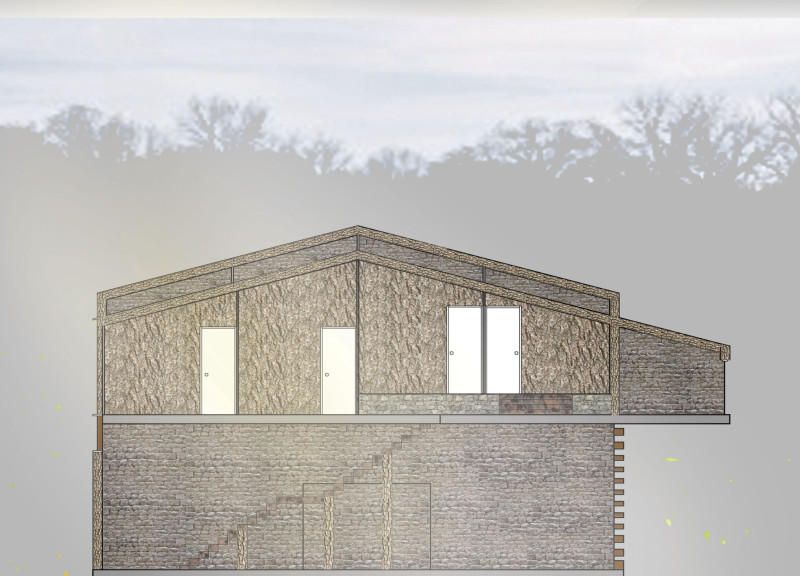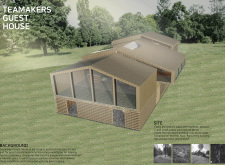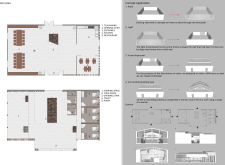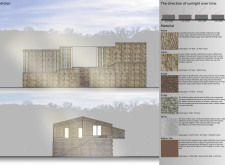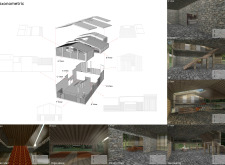5 key facts about this project
The essence of the Teamakers Guest House lies in its integration with the environment. The architecture reflects a deep understanding of wind dynamics, allowing for natural airflow and passive ventilation throughout the interiors. This approach reduces reliance on mechanical systems, aligning with contemporary sustainability practices. The extensive use of glass in critical areas facilitates the transmission of light, creating bright, welcoming spaces that foster a sense of openness and connection to nature. Additionally, the design emphasizes visual dispersion, allowing guests to enjoy picturesque views of the landscape while maintaining a sense of privacy within individual spaces.
Materials play an integral role in the overall aesthetic and functional performance of the project. Locally sourced wood has been repurposed from prior constructions, highlighting a commitment to sustainability and minimizing environmental impact. The incorporation of various local stones adds texture and depth, creating visual interest while ensuring structural integrity. The use of galvanized steel frames in the windows contributes a contemporary edge, complementing the organic feel created by the natural materials.
The spatial organization of the Teamakers Guest House reflects a well-considered approach to functionality and human interaction. The ground floor features a communal area at its heart, designed for tea making and social gatherings. Surrounding this central space are specialized areas for activities such as yoga and meditation, providing a holistic experience for guests. This arrangement encourages movement throughout the building while fostering a sense of belonging among visitors. The upper level houses intimate guest rooms, each strategically positioned to maximize views and natural light, creating calming retreats that prioritize relaxation.
Unique design elements further enhance the project’s appeal. The open staircase serves not only as a means of movement between levels but also as a focal point that visually connects different areas within the house. This design choice reinforces the project’s emphasis on interaction and accessibility. Additionally, the careful placement of windows and overhangs ensures that each room benefits from ample natural light, promoting a comfortable atmosphere throughout the day while adapting to seasonal changes.
In sum, the Teamakers Guest House exemplifies a nuanced approach to architecture that celebrates both its natural surroundings and the principles of sustainable design. It stands as a functional space that directly caters to the needs of its users while promoting a deeper connection to the environment. For those interested in exploring the architectural plans, sections, and designs that underpin this project, a closer examination of its presentation will offer valuable insights into the innovative ideas that shaped its development.


